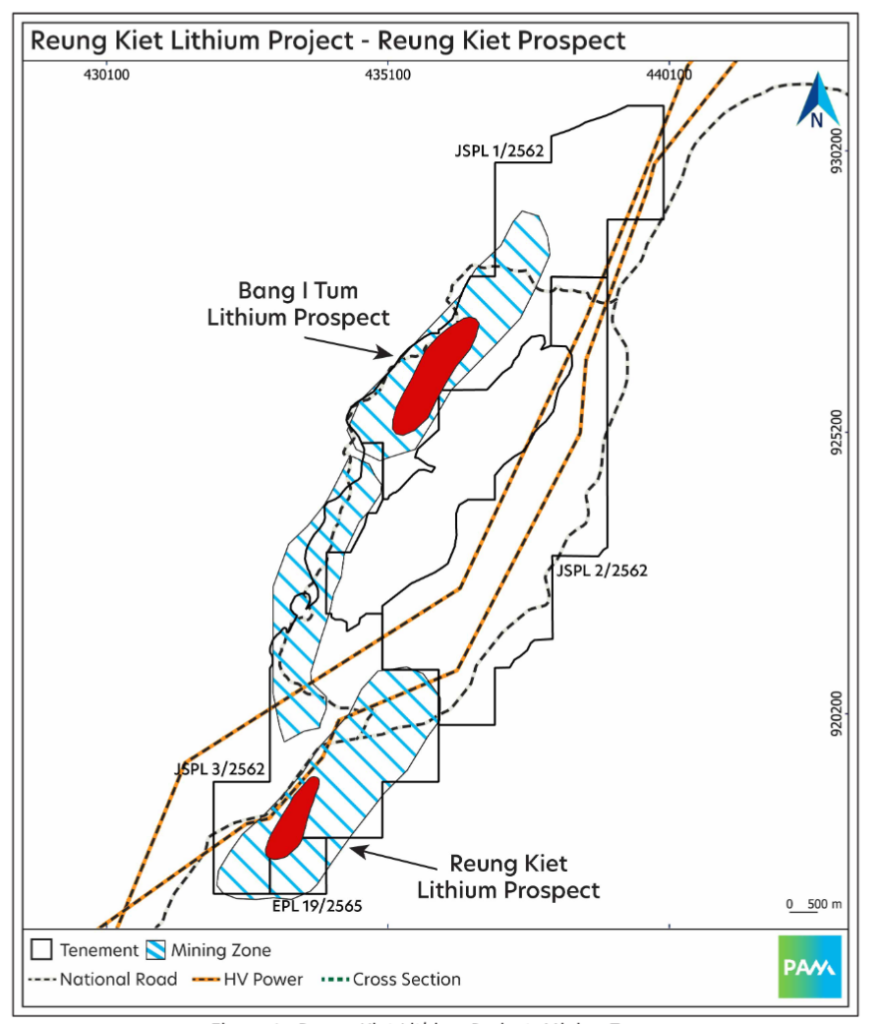Pan Asia Metals, a renowned developer of battery and critical metals, has recently announced a noteworthy expansion of its Kata Thong project in Phang Nga Province.
The company has acquired five additional exploration blocks dedicated to lithium-tin exploration. This development marks a significant step forward in Pan Asia Metals’ pursuit of valuable resources in the region.
This development arises as a result of the submission of special prospecting license applications (SPLAs) for promising hard-rock lithium and tin deposits, initiating a sequence of targeted locations identified by the company in the previous year.
Located within the esteemed tin-tungsten belt in Southeast Asia, these blocks exhibit elevated levels of lithium in the granite formations and experience geothermal activity. Pan Asia’s objective is to transform these blocks into environmentally sustainable and economically viable projects that can cater to the growing demand in the Asian electric vehicle and lithium-ion markets by delivering high-quality battery-grade products.
Diving Deep
The analyzed data reveals that two of the Special Protected Landscape Areas (SPLAs) are situated in close proximity to geothermal fields, with one in direct vicinity of the lithium-rich Khao Kata Khwam granite batholith. Remarkably, this granite intrusion spans an extensive area of 145 square kilometers and has yielded historical rock-chip assays indicating lithium oxide concentrations reaching as high as 2,700 parts per million.
Moreover, the strategic placement of these SPLAs holds promising prospects for the presence of lepidolite-style lithium and tin deposits. Initial assessments based on Pan Asia’s survey of stream sediments have unveiled significant anomalies of lithium oxide, concurrently occurring alongside other valuable elements such as tin, rubidium, and tantalum.
The Road Ahead: Approvals and Collaborative Ventures
Prior to commencing extensive exploration endeavors, each Strategic Power and Lithium Agreement (SPLA) will undergo a comprehensive evaluation process conducted by the Department of Primary Industry and Mines. Upon successful acquisition of the necessary licenses, Pan Asia intends to establish fruitful partnerships with esteemed Thai universities, capitalizing on their profound expertise in the field of geothermal energy.
The primary objective of this collaborative effort is to meticulously devise exploration strategies that encompass a comprehensive evaluation of lithium reserves and potential for power generation within the designated region.
This collaborative endeavor is anticipated to encompass intricate data analysis, meticulous surface water sampling, and the utilization of advanced geo-hydrology modeling techniques.
Strategically Positioned: A Catalyst for Greater Development
Located just 35km north-northeast of the rapidly developing Reung Kiet lithium project and 50km southwest of the state-owned 240 megawatt Rajjaprabha hydro-electric power station, the Strategic Prospectus License Applications (SPLAs) in Kata Thong hold significant strategic value.
Pan Asia is set to establish an initial plant at Reung Kiet, with an aim to achieve a production capacity of 10,000 tonnes per year of either lithium carbonate or hydroxide. If the Kata Thong applications progress successfully, this volume could potentially double.
The Managing Director of Pan Asia, Paul Lock, emphasized the transformative potential of the Kata Thong licenses, highlighting the unique opportunity to position the company as a zero carbon emitter. This is due to favorable geothermal energy prospects and the close proximity to the power station.

Lock acknowledged, “In recent years, automotive manufacturers have placed significant emphasis on reducing the carbon footprint of their supply chains. Our ability to produce environmentally friendly lithium products through lepidolite mining gives us a distinct advantage in the market.”
Historic Roots, Modern Potential
The Kata Thong region boasts a rich historical legacy in tin production that dates back to the 16th century. From 1961 to 1990, the Phuket-Phang Nga-Takua Pa tin field achieved a remarkable output of over 400,000 tons of tin in concentrates.
In addition to tin, this region has yielded valuable by-products including ilmenite, monazite, columbite-tantalite, zircon, and wolframite. Notably, lepidolite (lithium mica) has also been discovered at various mining sites.
It is intriguing to note that despite its esteemed mineral resources, the region has not witnessed substantial modern exploration efforts, specifically targeting primary hard-rock deposits. Nonetheless, assessments pertaining to the geothermal potential of the area have been underway since the late 1970s, presenting a promising outlook for potential future endeavors.


